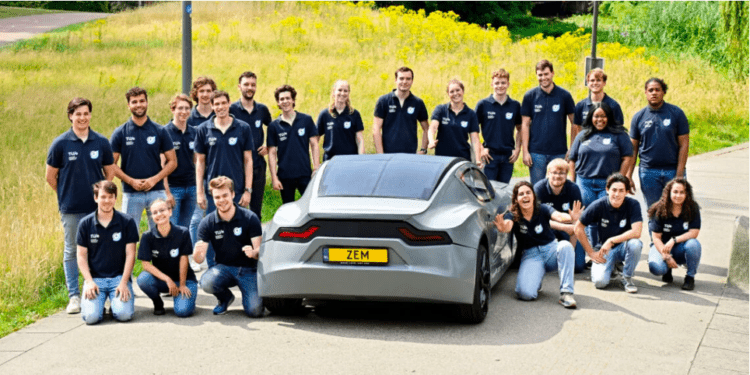Micromobility in 2022: refined, mature, and technologically advanced

Micromobility as a concept, a solution, and a way of life began to take hold in 2021.
Increased shared micromobility and COVID-enabled public transportation helped to make small electric vehicles mainstream enough for people to consider purchasing their own. As a result, 2021 was the year of the e-bike, with sales increasing by 240 percent in the 12 months leading up to July. As a result of this new normal, cities have adopted infrastructure plans that would have been unthinkable a decade ago (looking at you, Paris!).
2021 was also the year that people, particularly in cities, began openly discussing the impact of micromobility on emissions reduction, which was undeniably greater than the introduction of the electric car.
This year, we saw shared micromobility companies capitalize on this shift in mindset toward the humble e-scooter and e-bike, leveraging their dominant market positions to become more operationally efficient and get their hardware on point.
So, now that we’ve laid the groundwork for the future, let’s look at the top predictions for the micromobility space in 2022.
Everyone can ride an e-bike
The e-bike trend is expected to continue into 2022, especially since countries such as the United States are now offering subsidies of up to $900 off the purchase price of a new e-bike. However, the craze will not end with private consumers. According to Tony Ho, vice president of Segway’s global business development, the company is also seeing a significant increase in demand for e-bikes from micromobility companies. Segway has been known to supply e-scooters and e-bikes to the majority of the shared micromobility behemoths, including Lime and Bird.
“At first, Lime was a bike-sharing company, but it didn’t take off until they started doing scooters, partly because the scooter is cheaper and also easier to deploy,” Ho explained to TechCrunch. “Now it appears that the e-bike is gaining traction, and we’re seeing the mix begin to even out and a lot more orders on the e-bike side for sharing.” And for cities, it’s a no-brainer because they already have bike-sharing programs.”
New venture capital funding is becoming scarce
Some of the major players, such as Bird and Helbiz, have gone public, and Lime has promised to do so next year, and the industry has generally consolidated under a few major names. As a result, rather than more VC money and new entrants flooding in, the current market is likely to mature.
“After the whole Bird and Lime craze, I think investors have moved on to something else, like the Coco sidewalk robot delivery guys,” Ho said. “It still takes a lot of capital to get into this business, and I personally think it’s going to be tougher for the smaller guys, especially because cities require you to pay for the license and buy insurance.” It is no longer a game for the small startup. Those who made it through the previous wave are most likely here to stay.”
Those who remain are doing everything possible to reduce costs, become more efficient and sustainable, and comply with city regulations.
However, ride-hailing services may be making a comeback
“The orders and interest we received show that a lot of companies are returning to play, so that next year, as people recover from the pandemic, micromobility will be a priority on their agenda,” said Ho. “We’re seeing some companies return, including big names like ride-sharing companies.”
Micromobility suffered during the summer of 2020 as a result of pandemic lockdowns. Uber, for example, sold its micromobility company Jump to Lime, resulting in greater integration between the two companies. Lyft also ended many of its fledgling e-scooter programs in May of last year, but if Ho is to be believed, these two companies may try to get back in the game before losing all market share.
More AI and smarter vehicles are on the way
Cities despise scooterists who ride and park their vehicles on the sidewalk. They despise it so much that it has prompted many companies to innovate and develop some seriously smart scooters. Companies such as Spin, Helbiz, and Voi are already testing camera-based systems that can detect when a rider is riding on a sidewalk or is about to collide with a pedestrian and can even stop the ride in real time.
Others, such as Superpedestrian and Bird, are implementing similar advanced rider-assistance systems using a highly accurate location-based approach. Once companies figure out how to keep costs low and cities all over the world get a whiff of this fun-killing technology, the trend will only grow.
Having more sensors on micromobility vehicles also allows companies to monetize data, according to Horace Dediu, an industry analyst who coined the term “micromobility.”
“We’re going to see more sensing, which basically means dash cams, so a lot of imaging,” Dediu told TechCrunch. “I know this is coming to cars, but everything that happens in cars happens on a micro scale, and it often happens faster because you can roll out 100 million vehicles without investing that much.”
According to Dediu, by installing cameras in the front and rear of micromobility vehicles, companies will be able to image entire cities in the same way that dash cams do today. If these systems can already detect sidewalks and pedestrian lanes, they will almost certainly be able to detect road surface conditions, which could inform cities about road maintenance issues via a shared database. Micromobility companies could also sell that information to mapping companies like Google, allowing them to better image the world.
When considering what else micromobility vehicles can do today, such as torque sensors that measure the user’s input, Dediu predicts that companies will develop a slew of “Peloton-like services” that can be attached to wearables.
The metaverse and micromobility
“Billions of dollars have been invested by Meta, Facebook, Microsoft, and Apple in figuring out how to interact with someone who is wearing something on their head,” Dediu said. “At the same time, when it comes to micromobility, everyone just says we need to figure out a way to get people to wear helmets.” So I simply combined those two concepts and reasoned, “Well, if you’re going to wear a helmet, why not make it a smart helmet?” And if you’re going to wear a smart helmet, why not make it exciting and interesting enough that you’ll want to?”
According to Dediu, a helmet with a smart visor that augments reality as you ride around a city can not only make riders more aware of their surroundings and potentially safer, but it can also unlock experiences and get people outside and moving.
“Micromobility and the metaverse are tailor-made for each other,” he says. “It’s a matter of looking up.” Augmenting a car experience simply means becoming more isolated when looking down. So, do you prefer to look up or down?”
Warning: While this union may not take place in 2022, Dediu is confident that it will take place in some form or another over the next few years.
New – and heavier – form factors
The only issue with riding a scooter, e-bike, or moped to work every day is what happens when it rains? According to Oliver Bruce, a strategic adviser, angel investor, and co-host of the Micromobility Podcast with Horace Dediu, we may start to see some new, heavier-duty, closed-roof form factors emerge in both the consumer and shared markets to solve this problem and cater to different use cases.
According to Bruce, companies such as Arcimoto, which recently acquired Tilting Motor Works, and Nimbus are working on tilting three-wheeled electric vehicles that should be ready or close to being ready for market in 2022.
“If we’re serious about meeting our COP26 climate goals, new electric vehicles will need to come out and scale quickly,” Bruce told TechCrunch. “If we try to ramp up electric vehicles as they currently stand, we’re going to struggle.” We don’t have the resources to do it.”
Micromobility is being incorporated into the transportation mix.
“I believe 2022 will see the application of rides into public transportation credit,” Bruce predicted. “For example, you’ll be able to get off the subway and onto an e-bike, and it’ll be a cross-subsidized trip.”
According to Bruce, this will be a side effect of all the infrastructure plays we’re seeing with cities around the world, but primarily in Europe, of adding more bike lanes. However, it will also be a function of micromobility companies significantly lowering the per mile cost of servicing vehicles.
“The economics start to stack up for operators to be able to sell in bulk kilometers to transportation agencies, and then those transportation agencies will say, cool, you can unlock the scooter on your metro card or via your app.” Certain cities around the world will begin to incorporate this into their public transportation.”
Improved Maps integration
“2022, maybe the year after, will be the year of software,” Dediu predicted.
Today, transit planning and mapping apps such as Google Maps and Moovit have begun to integrate micromobility options, providing users with multiple options for getting to their destination. This level of integration should progress to the point where Maps acts as a search engine, displaying the top transportation hits in seconds.
“Today, we say, I want to go from A to B, and you give me three or four options, and no one bids on my ride,” Dediu explained. “I’d like to see 15 bidders.” I’d like to see an auction take place every time I request a ride, similar to how Google search works. This is so obvious that I’m surprised it hasn’t been invented by the time we reach 2022.
“But a lot of that is due to a lack of glue.” The API interaction isn’t there yet, so once that happens on the shared side, we should see a nice explosion of opportunities for shared operators to bid on Google Maps, which should make a lot of money from micromobility. As a result, micromobility will be monetized through discovery.”







